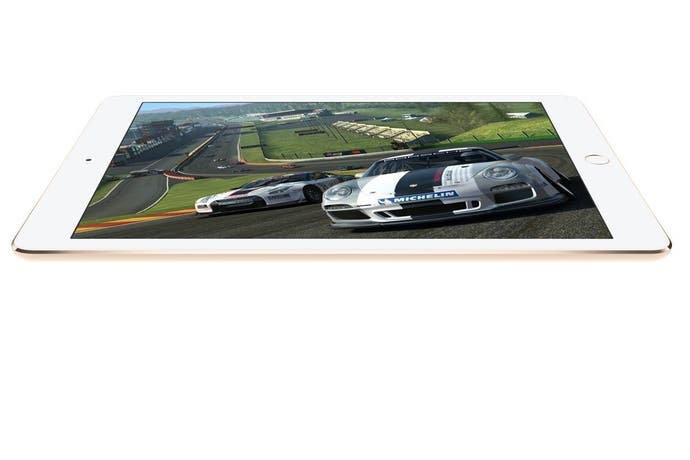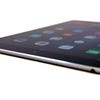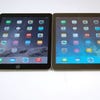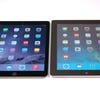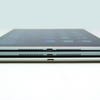Apple iPad Air 2 review
The tablet market is declining. Can this cutting-edge slate arrest the trend?
If you're in the market for a stunning tablet at a reasonable price-point, utilising the most cutting-edge technology and backed by a slick, easy to use operating system, the second-generation iPad Air is the default choice. It retains or improves upon the many strengths of last year's offering and addresses most of the lingering issues inherent in the iOS platform. On top of that, it offers a massive CPU upgrade and graphics power to top Xbox 360 and PlayStation 3, but is that enough? The challenge facing the industry is that tablet sales are falling quite dramatically, while Apple - and indeed its competitors - don't seem to know how to arrest the decline.
The tablet market seems to be facing too major problems. Firstly, while mobile technology is rapidly evolving and scaling upwards, the complexity of the tasks they are processing is not. Today's iPad doesn't decode media any better than its predecessors, while checking Facebook or browsing the internet doesn't really require the 40 per cent boost to CPU power or the 2.5x increase to GPU performance that Apple's new tablet possesses. The new iPad does the staples more smoothly and quickly, but not to a degree that demands an upgrade. Indeed, some might suggest that the biggest obsolescence problem facing classic iPads isn't day-to-day usage - but rather the latest iOS updates, which often seem to slow down older hardware for reasons unknown.
On top of that, the market for mobile devices is evolving. Why buy a tablet and a smartphone when the new generation of larger 'phablets' do much the same job in an all-in-one device? We've always respected the way that Apple houses the most powerful mobile technology in the smallest form-factor, but this year we've seen both a larger iPhone, and a phablet companion - the iPhone 6 Plus. It's what the market wants and the sales figures have been phenomenal, but on the flipside there's the sense that Apple itself isn't quite sure how to justify the existence of the new iPad Air. It's built a stunning new device that seemingly ticks all the boxes, but doesn't quite know what to do with the technological marvel it has created. Meanwhile, the lacklustre iPad mini 3 bears all the hallmarks of a device sent out into the market to die.
The sales pitch to the declining market is even more difficult bearing in mind that on visual inspection, this year's model is a virtual dead-ringer for the last. Sure, there are changes - the fingerprint-scanning TouchID is new and works well (after a year with the iPhone 5S, it's difficult to go back to the old home button), while the stunning screen benefits from a new anti-reflective coat. The latest iPad is also 1mm thinner than the last, but in practice this makes no real difference to everyday usage (Apple reckon it's the thinnest tablet ever made, though Dell's 6mm Venue 8 7000 might have something to say about that). Regardless, it looks and feels similar to last year's model, though one change actually proves quite annoying - curiously, there is no mute switch on the new iPad.
- Order the iPad Air 2 from Amazon with free shipping
The major changes all lurk beneath the unibody aluminium casing, and the star of the show is the A8X processor, fabricated on the cutting-edge 20nm process. Most modern processors - like those found in PS4 and Xbox One, along with virtually every modern graphics card - are made on the older, more mature 28nm node. Shrinking down to 20nm ensures the transistors on the die are smaller than ever, meaning more computational power that requires a lot less power. Apple reckons that three billion transistors are crammed onto the A8X - a remarkable figure bearing in mind that Intel's latest quad-core desktop chips require just 1.4 billion.
So where have has that prodigious silicon budget been spent? First up, CPU core count increases for the first time since the release of the iPad 2. The iPhone 6's A8 processor features the standard Apple dual-core arrangement - the iPad Air 2 has three, clocked at 1.5GHz. The graphics side of the equation has also been boosted significantly, with what's believed to be a six-core PowerVR GX6650 GPU [UPDATE 12/11/14 11:25am: It's actually an eight-cluster PowerVR GXA6850 - as revealed by Anandtech. That still doesn't quite explain the entirety of the enormous transistor count though. Our theory? Well, 20nm technology is still new and untested. The yield of absolutely perfect chips is still likely to be fairly low. It may well be the case that there's a deactivated CPU core or GPU cluster present on the die, so even if a particular chip has a defect, it can still be used. Micro-photography of the chip will better inform us in the near future.
Certainly, the iPad Air 2's benchmarks are quite phenomenal. Geekbench 3's CPU tests suggest superb single-core performance for the mobile market, swiftly approaching the standard of a decent laptop, while multi-core performance looks simply breathtaking. However, it's worth sounding a note of caution owing to the lacklustre CPU scores yielded from 3DMark's daunting physics tests. As developer Futuremark explains, Apple's custom Cyclone CPU technology is breathtakingly good at some tasks, but rather lacking in others. As respected as Geekbench is, clearly it's not telling us the full story, and head-to-head comparisons with desktop processors based on this benchmark alone probably aren't fair.
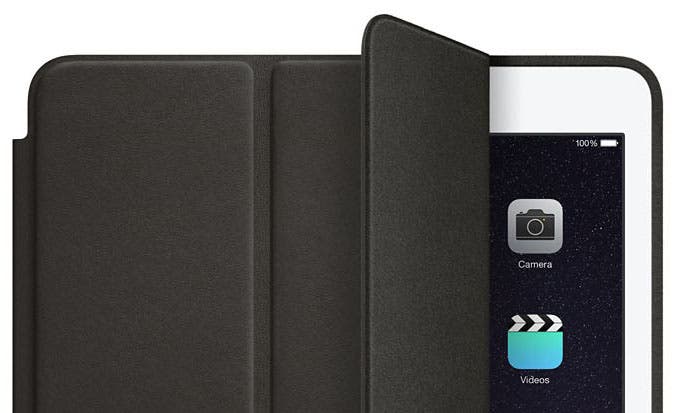
| iPad Air 2 | iPad Air | iPhone 6 Plus | iPad 4 | iPad 2/mini | Shield Tablet | MS Surface Pro 2 | |
|---|---|---|---|---|---|---|---|
| Geekbench Single-Core | 1819 | 1465 | 1557 | 774 | 251 | 1123 | 2504 |
| Geekbench Multi-Core | 4510 | 2656 | 2800 | 1408 | 430 | 3479 | 4762 |
| 3DMark Graphics | 31771 | 20001 | 24067 | 11725 | 2625 | 35433 | 47841 |
| 3DMark Physics | 10371 | 8368 | 9320 | 8502 | 2870 | 20250 | 30343 |
| 3DMark IceStorm Unlimited | 21776 | 15280 | 17782 | 10814 | 2676 | 30372 | 42324 |
| GFXBench T-Rex | 70.5FPS | 28.3FPS | 44.6FPS | 16.5FPS | 3.5FPS | 64.4FPS | 63.0FPS |
| GFXBench Manhattan | 32.6FPS | 12.9FPS | 19.5FPS | - | - | 31.0FPS | - |
However, in terms of graphics, the new iPad Air is up there with the best in mobile technology and it's difficult to argue with the level of graphical performance available here. We've previously gone in-depth on the console-matching prowess of Nvidia's Tegra K1 processor in our Shield Tablet review, and talked to the developer of the excellent Trine 2 Android port, Frozenbyte. The benchmarks all point to Apple matching - and in some cases marginally exceeding - Nvidia's accomplishments with K1.
The problem is that there's currently no killer app to demonstrate what the iPad Air 2 is truly capable of. It's curious that gaming barely got a mention at this year's iPad reveal, and there were no live demos showing just how good this technology is for state-of-the-art mobile visuals. Instead, Apple got to work - somewhat bizarrely - repositioning the iPad Air as more of a productivity tool, showing off the new tech with video editing and photo manipulation demos. Interesting stuff, but nothing truly compelling. From our perspective, we'd love to use the iPad as a full-on laptop replacement, but what's clear is that this requires more than just a processor upgrade - rather we need a radical evolution of the user interface.
One area that sees genuine improvement that definitely translates into an improved experience is memory management. Apps - Safari especially - are less likely to bomb out to the springboard owing to a crucial upgrade Apple has made to the iPad (and that really should have been rolled out to this year's phones too) - the inclusion of 2GB of RAM, as opposed to the meagre gig found in every other Apple product released in recent times. Working in concert with the CPU boost, browsing may not be massively faster, but it's certainly smoother with more tabs in play, and it's definitely more stable. The difference is noticeable but not revelatory compared to last year's iPad Air, but up against the iPad 4 and earlier models, browsing is definitely smoother and more responsive.
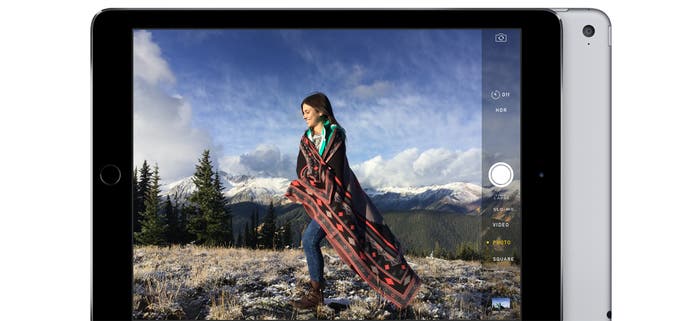
Other elements of the internals are also boosted significantly - most notably the iSight camera and the software supporting it. We get improved optics with a wider aperture, autofocus, a hybrid IR filter, and exposure control amongst other goodies imported from the recent iPhones, like slow-motion video, time-lapse and burst mode photography. You can get excellent results from the new set-up, but the fact remains that the iPad has - and probably always will be - a fragile, unwieldy device to use for taking stills or video. Apple's presentation saw its execs attempt to sell the new iPad as a photography and video device, apparently because the Retina display can be used as a large viewfinder. It's a rather odd argument to make, and while the anti-reflective coat helps outdoors, it's still not really usable as such in bright conditions - we'll stick to our smartphones, thanks, and pack a proper camera if we need it.
Bearing in mind that gaming is such a crucial - and lucrative - element of the iTunes App Store, it's a little disappointing that a landmark piece of technology like the A8X is not met at launch with some bespoke, compelling software. We have a state-of-the-art graphics processor, in theory capable of matching and exceeding the last-gen consoles - the perfect opportunity to push mobile gaming forward with exclusive experiences. However, at the moment, there's nothing to push the hardware - there's no equivalent to Nvidia's Trine 2 release for Tegra K1. It's not as if Apple hasn't gone out of its way to champion iPad gaming in the past - after all, when the iPad 2 hit the shops, complete with its dual-core CPU upgrade and 5-9x GPU boost over its predecessor, Infinity Blade arrived with it, signalling a new era in mobile gaming.
In the absence of the next big thing in mobile gaming, we are left with an iterative boost to frame-rates in existing titles, but little else. Modern Combat 5 and World of Tanks Blitz hits 60fps more consistently than they do on the iPad Air or the iPad 4, but the visuals are the same. BioShock performance is only marginally better, and still looks just as ugly. At its best, the iPad Air 2 produces significantly improved performance in the 60fps-orientated hack 'n' slash title, Eternity Warriors 3, while the graphically stunning Anomaly 2 gets pretty close to a full 60fps lock - something its predecessors fail to match. In all cases though, it's clear that the 2.5x boost to graphical performance does not translate across to a similar increase to frame-rates. Similar to Tegra K1 - and indeed the A5-powered iPad 2 released back in 2011 - the A8X is going to need some bespoke coding attention to really show us what it is capable of.
iPad Air 2 - the Digital Foundry verdict
If you're in the market for a tablet that offers the best possible technology combined with a beautiful screen and a superb form factor, the iPad Air 2 is the best product available. Everything that made us declare its predecessor as 'tablet of the year' back in 2013 is present and correct in its successor, with many of the remaining niggles in its performance mostly resolved.
If you're an owner of an older, fatter iPad (essentially anything older than last year's Air), there's a worthwhile improvement in moving across to the latest model, particularly if you own the iPad 2 or its immediate successor. The speed increase offered by the A8X is undeniable, but the unsung hero of the piece is the 2GB memory upgrade, which appears to have finally addressed the most annoying stability issues. On top of that, you get all the benefits of the slightly more refined Air chassis: the improved form factor, weight reduction and smaller bezels combine to make this an excellent upgrade for those with older slates.
But at a time when the tablet market needs something special to reverse its alarming decline, our impression is that the silicon designers have done a brilliant job in providing the next big thing in tablet design, but no convincing case has been put forward for what we should use it for - the A8X is crying out for a killer app that simply isn't there yet. The challenges facing the tablet market aren't going to be solved by brilliant technology alone - it needs to be matched by a wealth of new ideas and must-have content. Right now, the end result is that the iPad Air 2 comes across as a potentially revolutionary product that looks and feels like an iterative upgrade.
